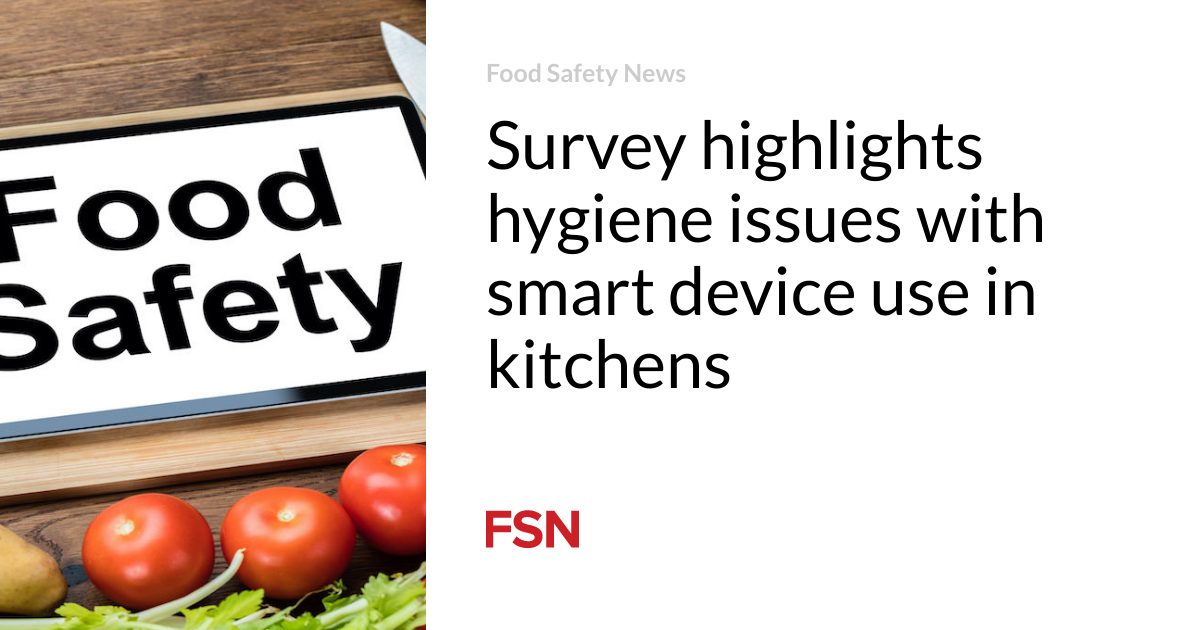Food
Survey reveals hygiene issues when using smart appliances in kitchens

A study in Ireland has highlighted the potential risks associated with using smart appliances in the kitchen while cooking.
The study examined hygiene habits when using a smartphone or tablet in the household kitchen.
One in three participants does not wash their hands after touching raw chicken and before touching a smart device. Three-quarters do not wash their hands after handling raw eggs and before touching their smart device.
The study was conducted by Queen’s University Belfast and involved 51 participants who were observed cooking a meal, including raw poultry and raw eggs, using smart devices.
Findings from cooking activities
People were asked to prepare a meal of chicken goujons and a salad while following a recipe provided by researchers on a tablet. The recipe was available as a video or in written form. Only a fifth of participants cleaned the tablet during the activity, and an unclean cloth or cover was used on all occasions.
Participants had their hands and personal devices swabbed to be analyzed for bacteria. During a 30-minute cooking activity, they touched their smart device an average of almost six times. After cooking, about 6 percent of pre-cleaned appliances were contaminated with potential food poisoning bacteria.
Observations showed that the participants Food safety behavior fluctuatedand poor hygiene practices were common during meal preparation. The frequency with which people touched the tablet while preparing the meal varied from one to ten times during cooking.
Using antibacterial wipes that contain alcohol can reduce contamination on the surfaces of smart devices.
Microbial analysis has shown that Salmonella and E. coli can survive on tablet screens for more than 24 hours at room temperature, suggesting that such devices may contribute to cross-contamination.
Trish Twohig, food safety director at Safefood, said: “From searching for recipes to watching cooking classes or capturing moments for social media, smart devices such as smartphones or tablets have become indispensable tools for many when preparing meals. Given the widespread use of these appliances in the kitchen, people should be aware of the potential food safety risks.”
Focus group and survey results
People could generally identify good and bad safety practices; However, they said that external factors, such as a lack of time and the presence of children, could influence their behavior.
A survey was also conducted among 520 adults in Ireland to understand food safety perceptions, attitudes and awareness when cooking and using a smart appliance at the same time.
Younger participants and women were more likely to use an appliance while cooking or preparing a meal. There was a low perceived risk of cross-contamination from equipment and contracting food poisoning at home.
Dr. Mairead McCann, Technical Director at Safefood said: “This new research is a useful reminder for home cooks of the potential risks associated with smart appliances in the kitchen and the importance of good food safety at home. Following good habits, such as washing hands regularly and correctly and cleaning and disinfecting smart appliances, can help reduce cross-contamination when cooking and using them.”
Tips from Safefood, a group that promotes food safety and nutrition in Northern Ireland and the Republic of Ireland when using phones and tablets in the kitchen, include washing hands, cleaning worktops and disinfecting smart appliances.
Before and between handling ingredients and your smart device, wash your hands thoroughly with warm water and soap and dry with a clean towel. Always wash kitchen countertops with warm, soapy water before and after preparing food. Interim cleaning reduces cross-contamination.
Before you start cooking, disinfect your smart device to help reduce possible cross-contamination. Disinfect the appliance after cooking if you have worked with raw ingredients such as meat, poultry or eggs. Make sure you always follow the manufacturer’s instructions.
(To sign up for a free subscription to Food Safety News, click here.)













